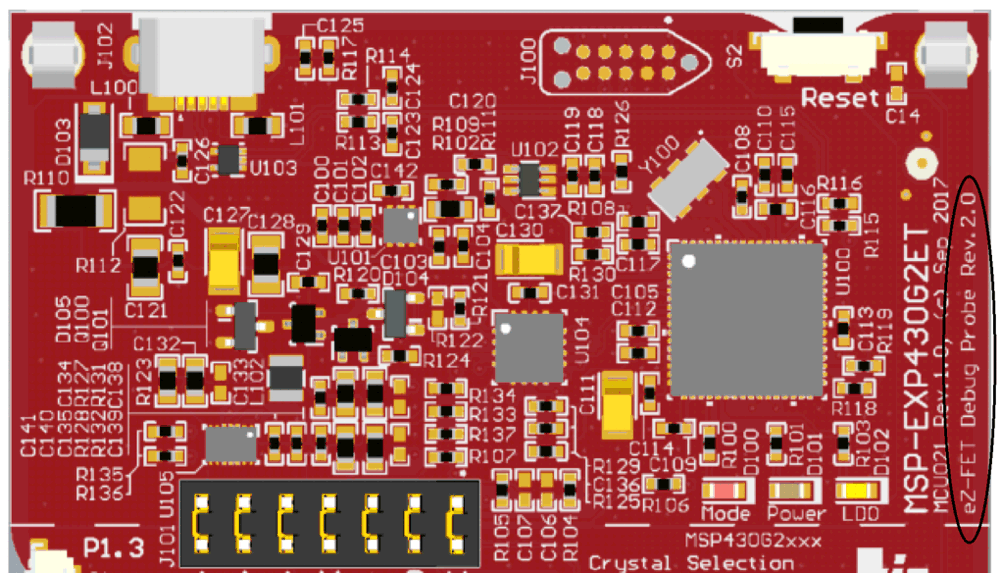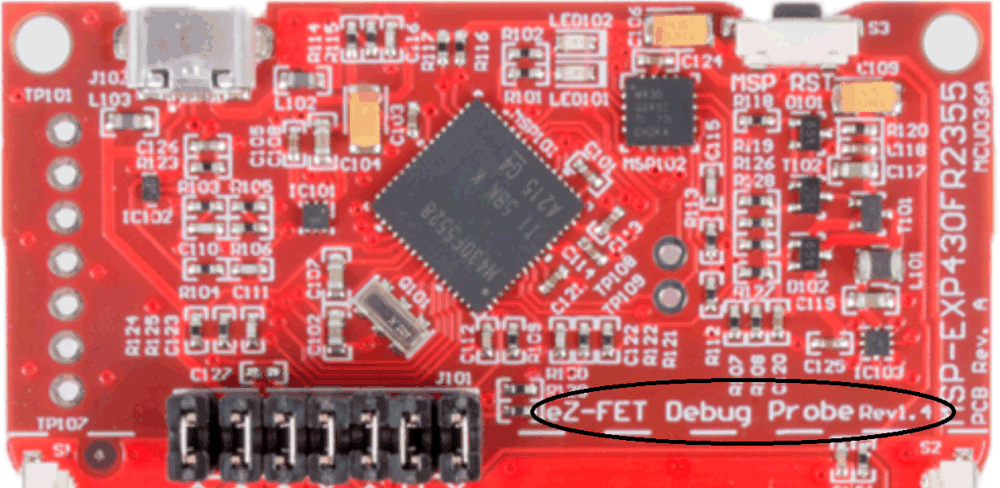SLAU647O July 2015 – April 2020
-
MSP Debuggers
- Trademarks
- 1 Introduction
- 2 MSP Debug Probe Overview
- 3
Hardware Identification
- 3.1 How to Determine If Your Hardware is Based on eZ-FET or eZ-FET Lite
- 3.2 How to Determine If Your Hardware is Based on eZ430
- 3.3 Signal Connections for In-System Programming and Debugging
- 3.4 Using the Power Supply Feature of the eZ-FET and eZ-FET Lite
- 3.5 Using the Power Supply Feature of the MSP-FET430UIF and MSP-FET
- 4 Hardware Installation
- 5
Debug Probes Hardware and Software
- 5.1 MSPDebugStack
- 5.2 Ultra-Low-Power (ULP) Debug Support
- 5.3 EnergyTrace™ Technology
- 5.4 Unlimited Software Breakpoints in Flash, FRAM, and RAM
- 5.5 JTAG Access Protection (Fuse Blow)
- 5.6 MSP-FET Stand-Alone Debug Probe
- 5.7 MSP-FET430UIF Stand-Alone Debugger
- 5.8 eZ-FET and eZ-FET Lite Onboard Emulation
- 5.9 eZ430 Onboard Emulation
- 5.10 MSP-FET430PIF
- Revision History
5.8 eZ-FET and eZ-FET Lite Onboard Emulation
The eZ-FET and eZ-FET Lite are powerful onboard flash emulation debug probes for application development on MSP430 microcontrollers (see Figure 38). The eZ-FET and eZ-FET Lite onboard emulation are the successors of the legacy eZ430.
Both eZ-FETs provide a USB interface to program and debug the MSP430 MCUs in-system through the pin-saving Spy-Bi-Wire (2-wire JTAG) protocol. Furthermore, the USB interface can be used for backchannel UART communication.
Both development tools support development with all MSP430 MCUs. They are designed as onboard emulation that is available on several LaunchPad kits. (Only MSP430 MCUs that implement the SBW2 protocol are supported.)
 Figure 38. eZ-FET and eZ-FET Lite (Top View)
Figure 38. eZ-FET and eZ-FET Lite (Top View) Figure 39 and Figure 40 show revisions 1.4 and 2.0, respectively, of the eZ-FET.
 Figure 40. eZ-FET Rev 2.0 (Top View)
Figure 40. eZ-FET Rev 2.0 (Top View) 